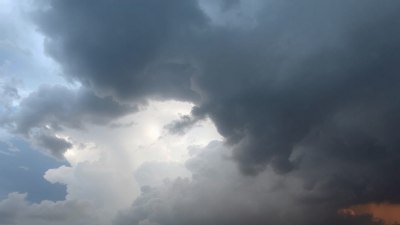Why Birds Seem to Have Their Act Together Way More Than Humans on Windy Days
Explore how birds adapt and thrive in windy conditions compared to humans.

Windy days can be a challenge for humans, but for birds, they often present unique opportunities. Observing birds in flight during blustery weather reveals a remarkable ability to navigate, adapt, and utilize the wind to their advantage. This article delves into the physiological adaptations of birds, their behavioral responses to wind, and the reasons they seem to have their act together more than humans when dealing with windy conditions.
Bird Physiology: Adaptations for Windy Weather
Birds possess a variety of adaptations that enable them to not just survive but thrive during windy days. One key aspect is their lightweight skeletal structure. Birds have evolved hollow bones that minimize weight and allow for efficient flight in turbulent air. Additionally, their muscle composition is specialized for rapid and agile movements, enabling them to maneuver quickly despite changing wind patterns.
Feathers: The Unsung Heroes
Feathers play a critical role in a bird's ability to handle wind. They provide insulation, waterproofing, and most importantly, lift. The structure of feathers allows birds to adjust the angle and position of their wings to harness wind currents effectively. This ability to manipulate wing shape helps them ride the wind, conserving energy while maintaining stability.
Flight Techniques: Mastering the Winds
Birds have developed several flight techniques that enhance their control over windy conditions. Soaring is a common method employed by larger birds like eagles and vultures. By using updrafts, these birds can gain altitude without flapping their wings excessively. Similarly, many smaller birds exhibit dynamic soaring, where they exploit the wind gradient near the surface to achieve extraordinary speeds with minimal effort.
Behavioral Adaptations: Smart Responses
Behaviorally, birds exhibit remarkable intelligence and adaptability when wind conditions change. Many species will delay takeoff until winds are more favorable, or they may alter their routes to avoid turbulent areas. Moreover, flocking behavior is common in windy conditions as birds aggregate to reduce wind resistance and conserve energy. This social behavior not only aids in navigation but also provides safety in numbers.
Using the Wind to Their Advantage
Birds are experts at using the wind to their advantage. For instance, migratory birds often choose their travel times based on wind patterns. Tailwinds can significantly reduce the energy expenditure of long-distance flights, allowing birds to reach their destinations more efficiently. In contrast, headwinds may force them to adapt their strategies, including taking longer routes or seeking shelter until conditions improve.
Humans vs. Birds: A Comparative Analysis
When comparing birds' responses to windy days with those of humans, several factors come into play. Humans, equipped with a more cumbersome anatomy and less specialized adaptations for flight, generally find windy conditions uncomfortable and sometimes hazardous. The ability to walk or run against strong winds can be physically challenging, and many people choose to stay indoors during inclement weather.
The Psychological Aspect
Psychologically, humans often feel anxious or unsettled during high winds, largely due to societal conditioning and a lack of familiarity with these conditions. Conversely, birds appear calm and in control. This difference in emotional and psychological responses to wind can stem from instincts that have honed birds' skills over thousands of years, resulting in a confidence that humans are still working to develop in their own environments.
The Importance of Habitat
The natural habitats of birds often provide additional support in windy weather. Many species have adapted to live in environments where windy conditions are common, such as coastal areas or high altitudes. Trees and other vegetation provide cover, allowing birds to find shelter from strong winds during stormy weather. In contrast, urban areas can pose additional challenges for humans, presenting obstacles that can amplify the effects of wind.
Technology's Role in Human Response
Technological advancements have enabled humans to better prepare for and respond to windy weather. Weather forecasting has become increasingly accurate, allowing people to anticipate high winds and plan accordingly. Modern architecture incorporates features designed to withstand strong winds, ensuring the safety of buildings and infrastructure. Despite this, humans still lack the instinctive adaptability that birds display in response to environmental changes.
Nature’s Lessons
Observing birds during windy days offers valuable lessons for humans. The resilience and adaptability of birds can inspire us to develop greater awareness of our environment and improve our responses to challenges. Understanding how birds interact with the wind can encourage us to become more attuned to natural patterns and to embrace flexibility in our day-to-day lives.
Celebrating Avian Ingenuity
In conclusion, the difference in how birds and humans cope with windy days is a fascinating reflection of evolution, physiology, and behavior. While humans rely on technology and precautions, birds seamlessly integrate with their environment, showcasing a mastery of flight that we often admire. As we learn from our feathered friends, we can strive to cultivate our own adaptability and resilience in the face of life's unpredictable winds.











